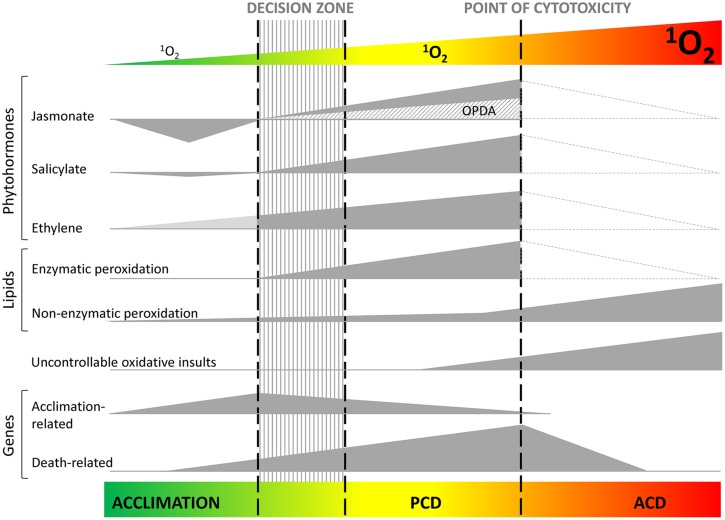FIGURE 2.
A model for the cellular responses to different 1O2 levels. Depending on the level of 1O2, the plant cell might trigger an acclimation response or a programmed cell death (PCD) program, or, in case of extreme 1O2 production, will succumb in a completely uncontrollable manner to the so-called ‘accidental cell death’ (ACD), due to a general oxidation that leads to the loss of structural integrity. PCD and acclimation, which are both initiated by genetically encoded machinery, are controlled by the phytohormones jasmonic acid (JA), salicylic acid (SA), and ethylene (ET). JA, SA, and ET seem to work as PCD-promoting signals, while the JA precursor OPDA (and dnOPDA) might counteract the JA-effect and work as inhibitory signals. JA seems to play a central role in the decision between acclimation and PCD. Evidence suggests that 1O2 production sites, production rates and production times will influence this model. The dotted lines in the ACD zone indicate predicted changes in phytohormone concentrations which still need to be substantiated by experimental data.

